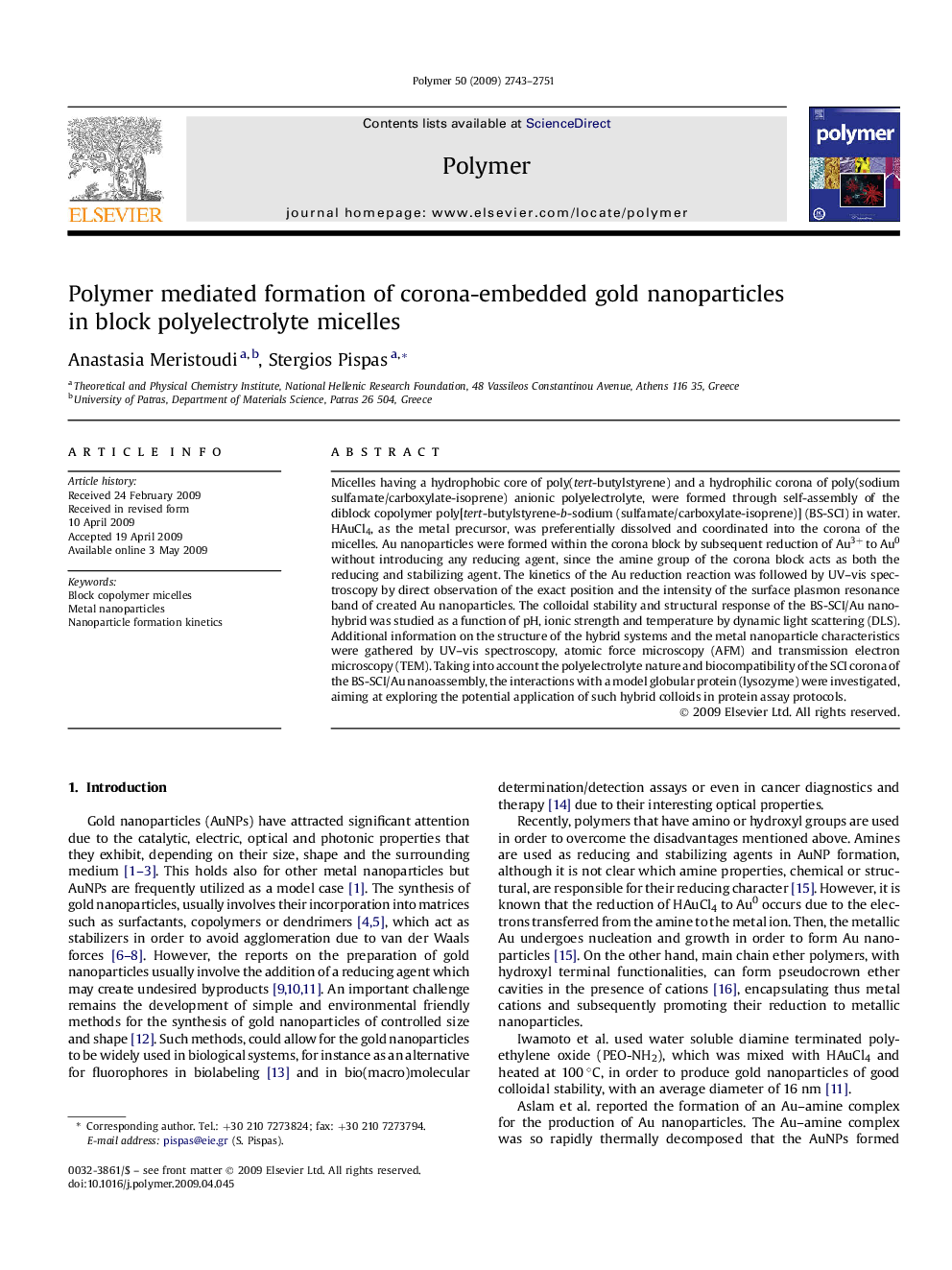| Article ID | Journal | Published Year | Pages | File Type |
|---|---|---|---|---|
| 5186150 | Polymer | 2009 | 9 Pages |
Micelles having a hydrophobic core of poly(tert-butylstyrene) and a hydrophilic corona of poly(sodium sulfamate/carboxylate-isoprene) anionic polyelectrolyte, were formed through self-assembly of the diblock copolymer poly[tert-butylstyrene-b-sodium (sulfamate/carboxylate-isoprene)] (BS-SCI) in water. HAuCl4, as the metal precursor, was preferentially dissolved and coordinated into the corona of the micelles. Au nanoparticles were formed within the corona block by subsequent reduction of Au3+ to Au0 without introducing any reducing agent, since the amine group of the corona block acts as both the reducing and stabilizing agent. The kinetics of the Au reduction reaction was followed by UV-vis spectroscopy by direct observation of the exact position and the intensity of the surface plasmon resonance band of created Au nanoparticles. The colloidal stability and structural response of the BS-SCI/Au nanohybrid was studied as a function of pH, ionic strength and temperature by dynamic light scattering (DLS). Additional information on the structure of the hybrid systems and the metal nanoparticle characteristics were gathered by UV-vis spectroscopy, atomic force microscopy (AFM) and transmission electron microscopy (TEM). Taking into account the polyelectrolyte nature and biocompatibility of the SCI corona of the BS-SCI/Au nanoassembly, the interactions with a model globular protein (lysozyme) were investigated, aiming at exploring the potential application of such hybrid colloids in protein assay protocols.
Graphical abstractDownload full-size image
